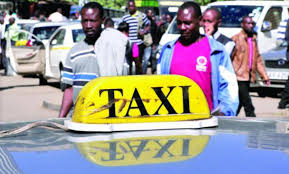It’s all about adaptability and thinking on your feet when it comesto entrepreneurial success, especially with new disruptive technology in developing countries. This erudite and well-researched comparison of uber-type taxi service start-ups in Kenya and South Africa illustrates the point brilliantly, BizNews writes.
With most Kenyans not having credit cards, Uber’s main rival there, Little Cab, an app-based ride-sharing service, showed great agility by using a mobile banking app called M-Pesa and introducing free Wi-Fi. Started up in July last year, LittleCab is now doing famously and giving the ubiquitous Uber a real run for their money. M-Pesa, developed by Safaricom with 66% market share is the most widely used mobile money service in Kenya and has helped Little Cab over the credit card bump.
In South Africa Uber’s rivals have had to rely on cheaper prices and high quality services to take a bite of the market. In case you didn’t know them, they are Taxify (15% lower prices than Uber with a higher proportion paid to its drivers), Zebra Cabs (a mobile-hailing more traditional hybrid) and Jozibear (Cape Town, Durban and Johannesburg only).
The authors warn that all face close scrutiny from regulatory authorities as the powerful traditional taxi associations up the ante, the most dramatic example being last week’s blocking of the highways leading to OR Tambo International Airport. I’d put my money on our politicians siding with the traditional taxis, simply because of their sway. This is Africa, where traditional taxi associations command routes through the bullet, panga and sjambok. Business and mortality carry almost equal risk. Perhaps a security app for uber-type drivers is the next innovation we’ll see on the market…
Uber is currently the dominant ride-sharing app used in Africa. It has rapidly grown its African footprint and now has operations in eight countries; Egypt, Ghana, Kenya, Morocco, Nigeria, South Africa, Uganda and Tanzania.
Disruptive competition through technology can bring substantial benefits to consumers, but it also raises competition and socio-economic issues. These result mainly from the displacement of traditional service providers. These issues cannot be ignored in a developing country. Regulation needs to at least ensure that conditions for competition are consistent and not only free but fair across competing services where possible.
There are also concerns that Uber, with its first mover advantage within the ride-sharing market, is growing into a monopoly despite the benefits to consumers. These concerns have been raised by incumbent taxi operators in Kenya and South Africa. As is the case across the globe, traditional metered taxis are seeing red. In South Africa, traditional metered taxi operators have protested and also tried, so far unsuccessfully, to get the competition authority to prosecute Uber for what they see as anti-competitive behaviour. In Kenya, there have been attacks on Uber drivers by business rivals.
But there are also signs of a rising challenge to Uber by new rivals. The Kenyan and South African experiences are worth noting. The different trajectories developing in these two markets make for an interesting comparison. wf









